Key takeaways:
- DIY denim repairs allow for creativity and personalization, transforming minor damage into unique fashion statements.
- Repairing jeans promotes sustainability and reduces waste, extending the lifespan of garments.
- Key techniques and tools, such as heavy-duty thread and proper stitching methods, enhance the durability and appearance of repairs.
- Embracing imperfections in DIY projects adds character and tells a story, enhancing the emotional connection to the repaired garments.
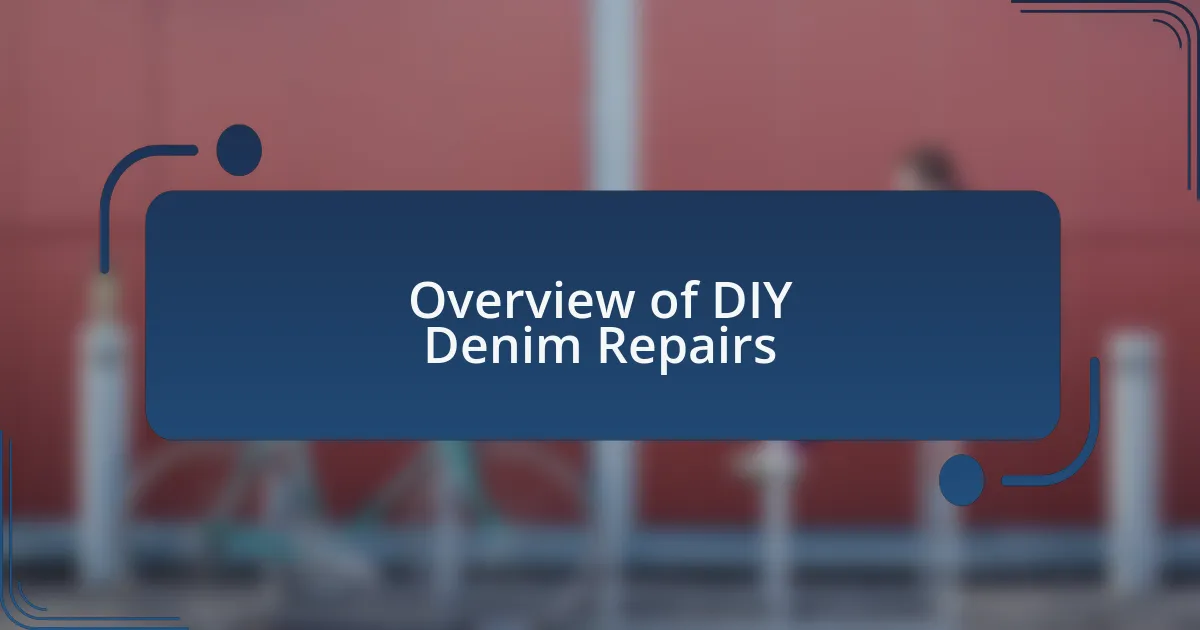
Overview of DIY Denim Repairs
When it comes to DIY denim repairs, I find it fascinating how personalized each approach can be. I vividly remember the first time I patched a pair of my favorite jeans; it felt both daunting and rewarding to bring them back to life with a simple piece of fabric. This hands-on experience allows individuals to express their creativity while addressing the common wear and tear that denim naturally experiences.
It’s amazing to think about how a small tear or frayed hem can feel like a minor catastrophe, but DIY repairs offer a way to reclaim our beloved garments. Have you ever been faced with a wardrobe malfunction that seemed insurmountable? By learning basic sewing techniques, you can transform those moments of panic into opportunities for self-expression. My first attempt at using iron-on patches turned a pair of distressed jeans into a unique fashion statement I still wear with pride.
Not only does DIY repair save money, but it also fosters a deeper connection to our clothes. In my experience, each stitch tells a story, reminding me of the adventures I’ve had while wearing those jeans. Taking time to repair denim can be a meditative experience, allowing us to appreciate both the fabric and the memories attached to it.
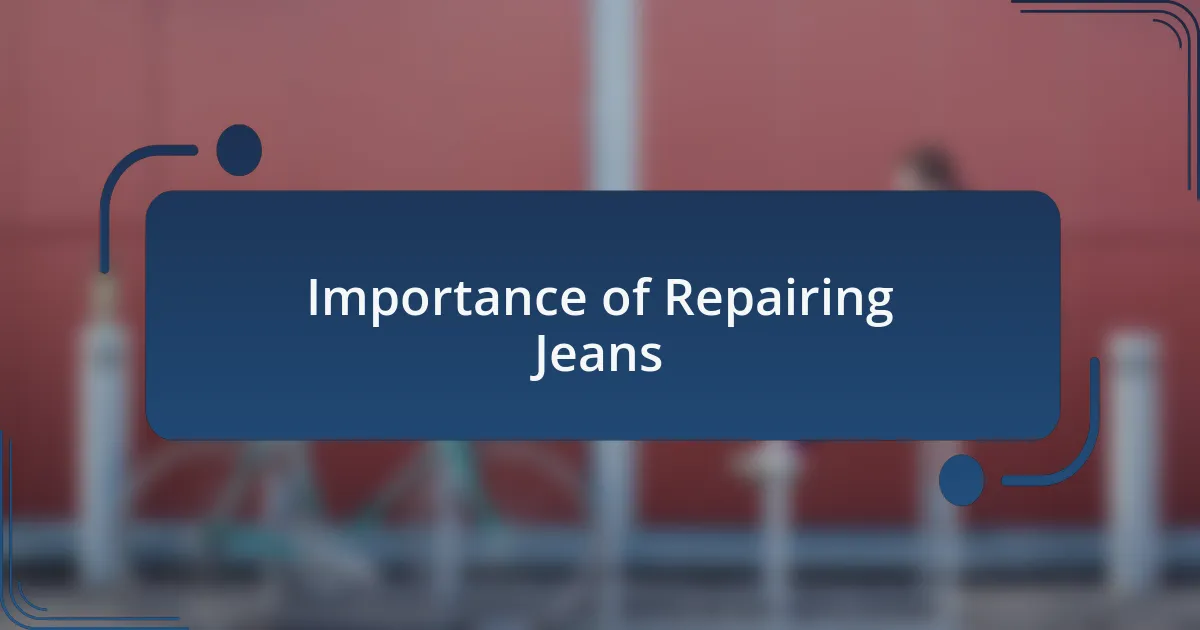
Importance of Repairing Jeans
Repairing jeans holds significant importance, especially considering the emotional attachment we develop towards our favorite pairs. I recall a time when a beloved pair of vintage jeans suffered a serious blow—a large rip that seemed impossible to fix. Instead of tossing them aside, I rolled up my sleeves and decided to patch them up. The sense of accomplishment when I completed that repair transformed not just the jeans but my perspective on clothing longevity. Isn’t it astonishing how a simple act of mending can breathe new life into something we thought was beyond saving?
Moreover, repairing jeans is a sustainable choice that resonates deeply with our responsibility to the environment. Each repair reduces waste and extends the life of our garments, preventing them from ending up in landfills. I often think about how the fashion industry thrives on consumption while we can make a real difference with a needle and thread. When I repaired my friend’s jeans, I noticed a spark in her eyes as she realized that her favorite piece could continue to be worn and loved instead of discarded. Isn’t it rewarding to think that one small act can contribute to a larger positive impact?
Engaging in denim repairs also cultivates a sense of pride in our possessions. I remember feeling a rush of joy every time I wore the patched jeans, knowing I had saved them from demise. There’s something inherently satisfying about seeing that repair work, a reminder of my creativity and resilience. Have you ever had that feeling? It surprises me how much value we can find in our clothes when we take the time to care for them.

Common Types of Denim Damage
Denim can bear the brunt of everyday wear, and a few common types of damage often surface over time. One of the most frequent issues is fraying at the hem, especially for those of us who wear our jeans with a casual flair. I’ve noticed that the more I wear my favorite jeans, the more they begin to wear down at the edges. Have you experienced that? It’s a subtle reminder that our garments tell stories through their wear.
Another typical problem is fading in high-stress areas like the knees or pockets. When I look at my jeans that show signs of wear, I can’t help but appreciate the character they develop. Each faded spot is like a badge of honor from adventures I’ve had while wearing them. It makes me reflective—how do we balance style and wear while keeping a strong connection to our memories?
Rips can pose a bigger challenge, particularly if they occur unexpectedly. I once discovered a small tear on the thigh of a pair I thought I might have to retire. I’ll admit, my first instinct was frustration, but that moment sparked my creativity. Why not turn that damage into a design feature? That tear became a playful patch that added uniqueness. Think about your own experiences—have you ever transformed a flaw into something you truly love?
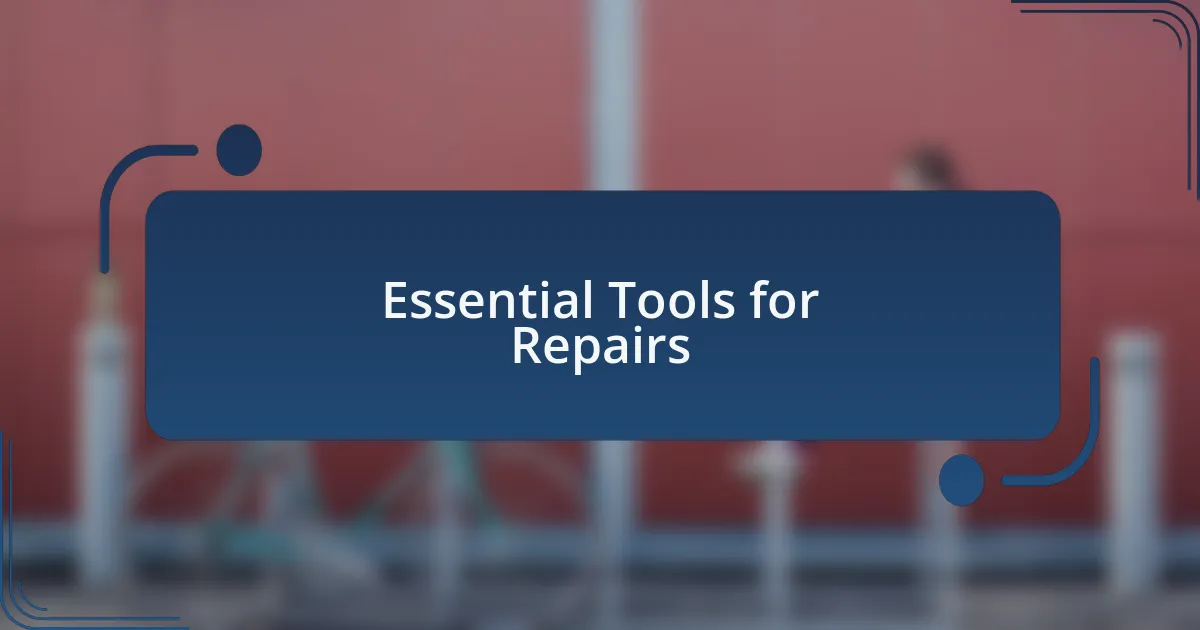
Essential Tools for Repairs
When it comes to DIY denim repairs, having the right tools is crucial. A good pair of fabric scissors is a must; I remember attempting repairs without them and ending up with frayed edges instead of clean cuts. It was frustrating, to say the least. Have you ever tried to work with dull scissors? It can really diminish the neatness of your project.
Another essential tool is a needle and thread made specifically for denim. I’ve experimented with different thicknesses, and I’ve found that using heavy-duty thread can make all the difference in both durability and appearance. When I first tackled a particularly stubborn tear, I was amazed at how a strong thread transformed my repairs from temporary fixes into lasting solutions. Have you noticed how the right materials can elevate your DIY efforts?
Lastly, don’t underestimate the value of an iron and ironing board. After repairing a seam, I like to press it flat to give it a polished finish. I once skipped this step out of impatience, and the results were less than satisfactory. I found myself asking, how can something so simple add such a professional touch? In my experience, taking the time to finish your project properly makes all the difference in the world.
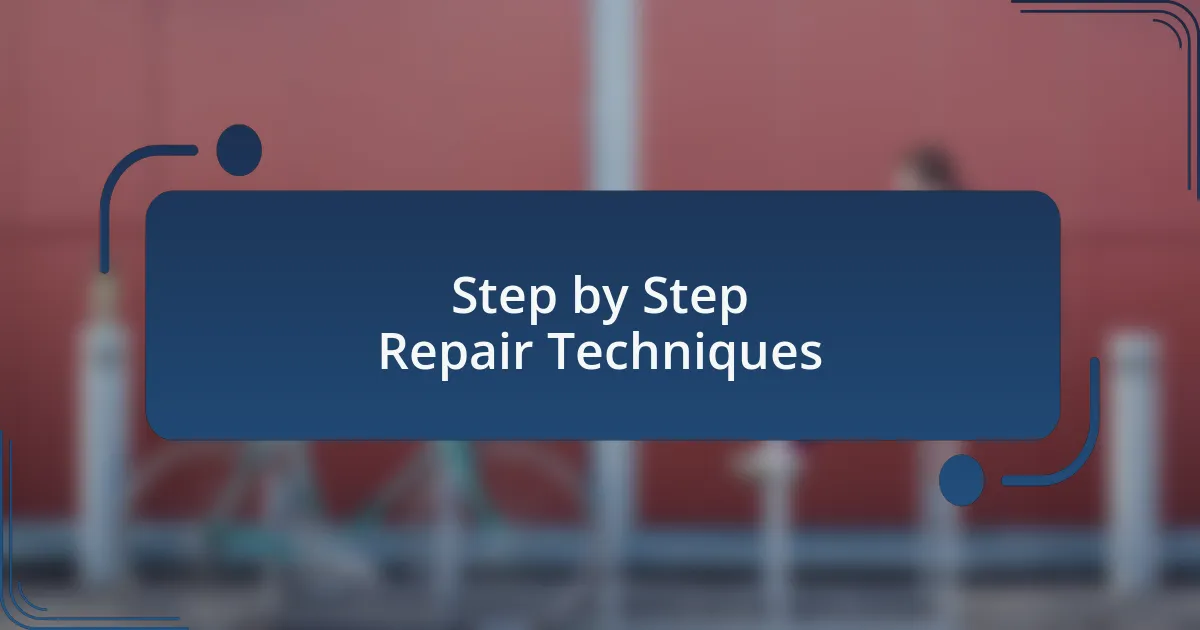
Step by Step Repair Techniques
When I first tackled a rip in my favorite pair of jeans, I realized the importance of a solid repair technique. Starting with turning the jeans inside out, I knew it was crucial to line up the edges to ensure a smooth repair. Have you ever tried to rush this step? Trust me, taking the extra minute to align everything perfectly saves you from frustration later on.
Next, I threaded my heavy-duty needle, recalling the struggle I faced with standard thread in previous repairs that just wouldn’t hold. As I began to sew, I opted for a backstitch, which offers strength and durability—more than a basic whip stitch. I vividly remember the satisfaction of pulling the needle through the fabric with confidence, thinking about how many times this technique would save my jeans from further damage down the line.
Finally, I always recommend finishing your repair with a few knots on the inside. This step might seem trivial, but I learned the hard way that loose ends can lead to the whole repair unraveling at the worst possible moment. After securing everything, I couldn’t help but admire the newly reinforced area, feeling a sense of pride for saving my beloved jeans once again. Don’t you just love that moment when your DIY efforts pay off?
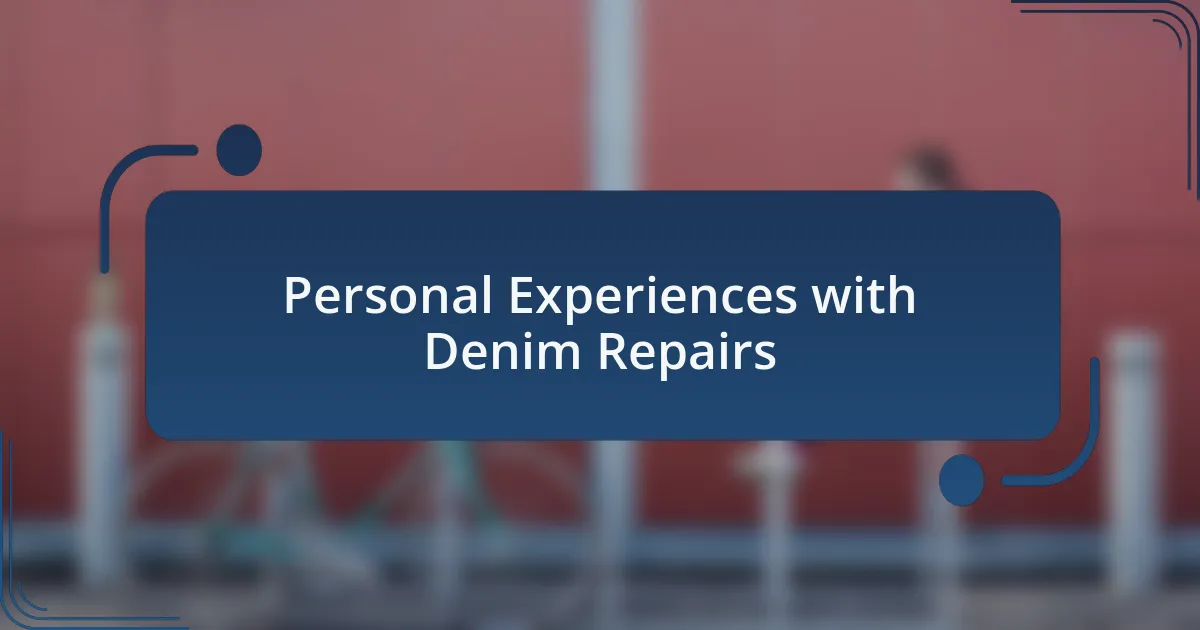
Personal Experiences with Denim Repairs
Reflecting on my denim repair journey, I remember a time when I accidentally snagged my jeans on a sharp object. I felt an immediate twinge of panic—these were my go-to jeans, the ones that fit just right. I decided to experiment with a patch; sewing on a contrasting fabric turned out to be a surprisingly fun process, and it gave my jeans a unique character that I never expected.
Another experience that stands out was when I discovered an unsightly fray at the hem. Instead of simply cutting away the excess fabric, I opted to create a raw hem look. I felt a rush of creativity as I carefully distressed the edges further, transforming what could have been a wardrobe mishap into a trendy update. Isn’t it amazing how a simple repair can lead to an unexpected style evolution?
One memorable repair involved a stubborn seam that kept coming apart after countless washes. I vividly recall the frustration I felt every time I put on those jeans, only to find the same issue reappearing. After applying a fabric glue technique that I had initially deemed too risky, I was overjoyed when the seam held strong through both wear and wash. This taught me that sometimes taking a bold approach can yield remarkable results in denim repairs. Have you ever been surprised by a repair that turned a challenge into a triumph?

Tips for Successful DIY Projects
When embarking on a DIY denim repair, it’s crucial to gather the right tools before you start. I remember one time when I dived right into a project without checking if I had everything I needed—needles, thread, and fabric patches. It turned into a frustrating scavenger hunt around my house. Trust me, having everything within reach not only saves time but also keeps your creative momentum flowing.
Another tip is to practice your techniques on scrap fabric before tackling your favorite pair of jeans. I once spent hours perfecting a stitching style on an old fabric swatch. That practice made a world of difference when I applied it to my jeans. Don’t you want your first attempt at a repair to shine instead of becoming a learning lesson?
Lastly, embrace the imperfections in your projects. I’ve had moments where the final result didn’t match my initial vision, yet those “flaws” often added charm and character. Have you ever wondered why some worn-out jeans look more stylish than brand new ones? It’s because each repair tells a story! Don’t shy away from celebrating your unique touches in the process.